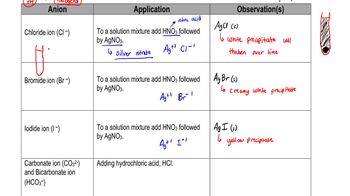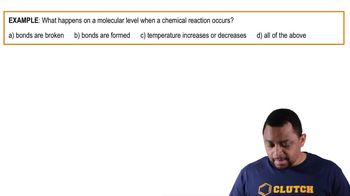Here are the essential concepts you must grasp in order to answer the question correctly.
Noble Gases
Noble gases, located in Group 18 of the periodic table, are characterized by their full valence electron shells, which make them chemically inert. This stability leads to the belief that they do not readily form bonds with other elements, as they do not need to gain, lose, or share electrons to achieve a stable electronic configuration.
Recommended video:
Chemical Bonding
Chemical bonding refers to the interactions that hold atoms together in compounds. The most common types of bonds are ionic and covalent bonds, which involve the transfer or sharing of electrons, respectively. The traditional view was that noble gases, due to their complete electron shells, were incapable of forming such bonds.
Recommended video:
Chemical Reaction: Chemical Change Example 1
Reactivity of Elements
The reactivity of elements is influenced by their electron configuration, particularly the number of valence electrons. Elements with nearly full or nearly empty valence shells tend to be more reactive, while those with full shells, like noble gases, were historically considered non-reactive. The discovery of compounds formed by noble gases challenged this long-held belief and expanded the understanding of chemical reactivity.
Recommended video:
Valence Electrons of Elements (Simplified) Example 1
 Verified step by step guidance
Verified step by step guidance Verified Solution
Verified Solution



 3:16m
3:16m